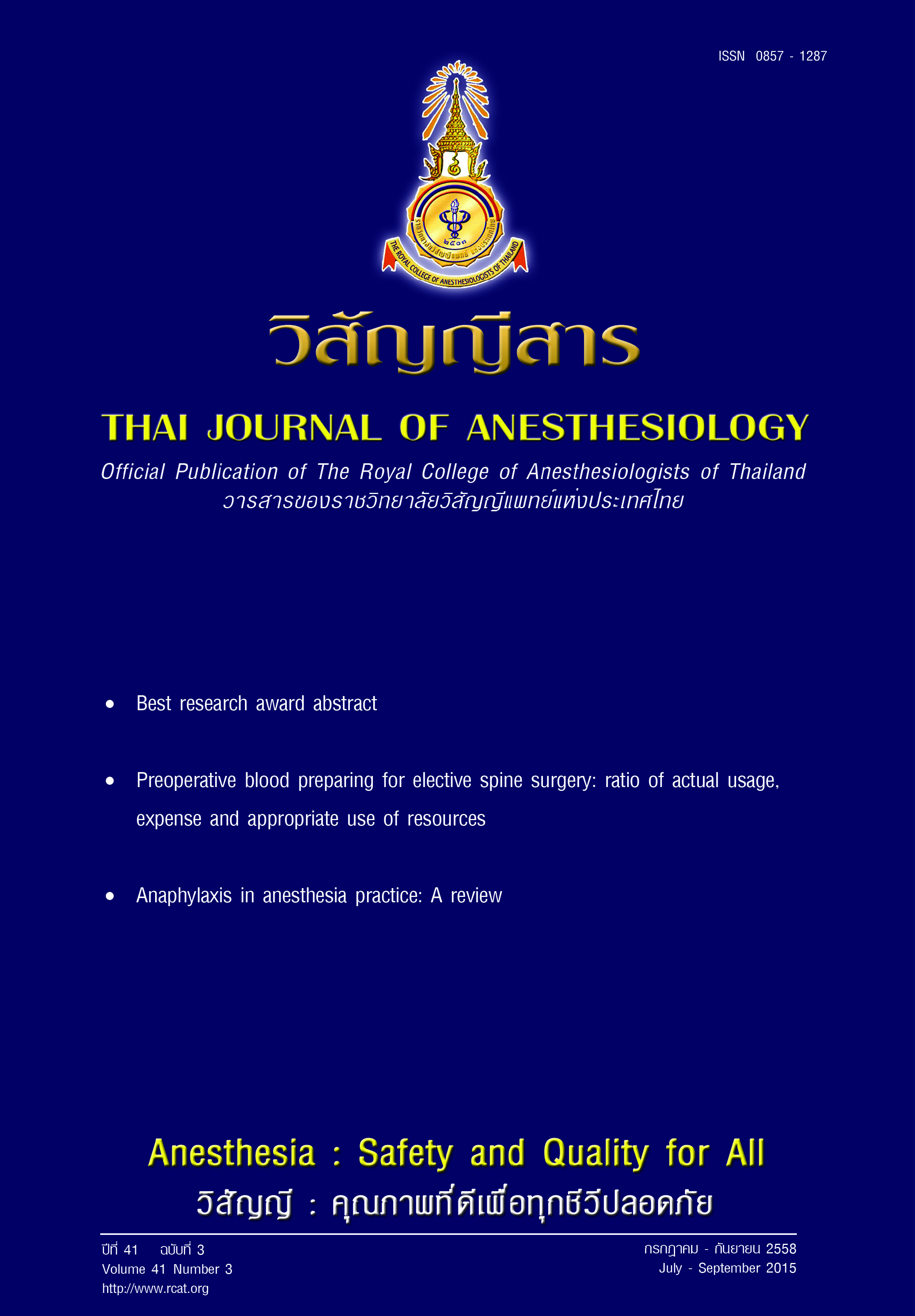Postoperative Nausea and Vomiting Incidence in Craniotomy Patients and Associated Factors
Main Article Content
Abstract
Background: Intracranial surgery itself appeared to have an association with postoperative nausea and vomiting (PONV). Previous studies were shown the incidence rates of postcraniotomy PONV varied from 10% to 74%1. Which there is no definite conclusion for other risk factors. Almost of these studies are either retrospective, conducted in a small group, or observed for a short postoperative period. The objective of this study was to assess the incidence and risk factors of PONV after craniotomy surgery in Ramathibodi Hospital.
Method: Postoperative nausea and vomiting was prospectively assessed within period of 1, 4, 24, 48, and 72 hours after elective craniotomy surgery in 120 patients; 18 to 80 years of age with American Society of Anesthesiologists (ASA) classifications I to IV. All patient-specific, surgical-related and anesthetic-related risk factors were analyzed by SPSS v.18
Result: The overall incidence of PONV after elective craniotomy surgery in Ramathibodi Hospital was 35%. PONV occurred the most in the period of 1-4, 4-24 hour after the surgery (20%). Multivariate statistical analysis showed the risk factors for PONV, which are history of PONV/motion sickness and postoperative opioid. Apart from these recognized risk factors, other anesthetic-related risk factors are anesthetic duration (adjusted RR 1.006, 95% CI 1.001-1.012) and blood transfusion (adjusted RR 3.776, 95% CI 1.184-12.041). The incidence of PONV is decreased in patients receiving steroid (adjusted RR 0.180, 95% CI 0.047-0.695). PONV tends to occur after suboccipital craniotomy procedures compared with other sites of surgery (adjusted RR 7.9, 95% CI 1.9-32.7).
Conclusion: The incidence of PONV within 24 hours after craniotomy was approximately 30% then decreased over time. Patients undergoing craniotomy with additional risk factor should be identified as high-risk patients for PONV. Multidisciplinary and multimodal interventions such as antiemetic prophylaxis, effective pain control are necessary to effectively prevent and treat PONV in these patients.


